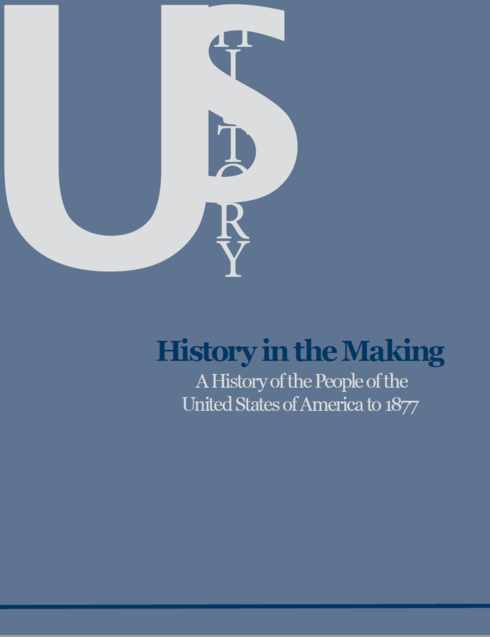Library Research Guides
World History: Cultures, States, and Societies to 1500 by Eugene Berger (2016): Galileo
World History: Cultures, States, and Societies to 1500 offers a comprehensive introduction to the history of humankind from prehistory to 1500. Authored by six USG faculty members with advance degrees in History, this textbook offers up-to-date original scholarship. It covers such cultures, states, and societies as Ancient Mesopotamia, Ancient Israel, Dynastic Egypt, India's Classical Age, the Dynasties of China, Archaic Greece, the Roman Empire, Islam, Medieval Africa, the Americas, and the Khanates of Central Asia. It includes 350 high-quality images and maps, chronologies, and learning questions to help guide student learning. Its digital nature allows students to follow links to applicable sources and videos, expanding their educational experience beyond the textbook. It provides a new and free alternative to traditional textbooks, making World History an invaluable resource in our modern age of technology and advancement.
 Western Civilization by Various Authors (2018): Boundless.
Western Civilization by Various Authors (2018): Boundless.
The word history comes ultimately from Ancient Greek historía, meaning “inquiry,” “knowledge from inquiry,” or “judge.” However, the question of what kind of inquiries historians pose, what knowledge they seek, and how they interpret the evidence that they find remains controversial. Historians draw conclusions from past approaches to history, but in the end, they always write in the context of their own time, current dominant ideas of how to interpret the past, and even subjective viewpoints. Furthermore, current events and developments often trigger which past events, historical periods, or geographical regions are seen as critical and thus should be investigated. Finally, historical studies are designed to provide specific lessons for societies today. In the words of Benedetto Croce, Italian philosopher and historian, “All history is contemporary history.”
 U.S. History by P. Scott Corbett et al. (2020): Openstax.
U.S. History by P. Scott Corbett et al. (2020): Openstax.
U.S. History is designed to meet the scope and sequence requirements of most introductory courses. The text provides a balanced approach to U.S. history, considering the people, events, and ideas that have shaped the United States from both the top down (politics, economics, diplomacy) and bottom up (eyewitness accounts, lived experience). U.S. History covers key forces that form the American experience, with particular attention to issues of race, class, and gender.
American Yawp by Joseph Locke (2020): Stanford University Press
Many American history textbooks struggle to encapsulate American history. Some organize around themes—The American Promise, The Story of American Freedom—while others surrender to the impossibility of synthesis and retreat toward generality—America’s History, The American People. But in the oft-cited lines of the American poet Walt Whitman we find as good an organizing principle as any other: “I too am not a bit tamed—I too am untranslatable,” he wrote, “I sound my barbaric yawp over the roofs of the world.” Long before Whitman and long after, Americans have sung something collectively amid the deafening roar of their many individual voices. Here we find both, chorus and cacophony, together, as one. Always free, always open, this textbook offers the story of that barbaric, untranslatable American yawp.
 History in the Making: A History of the People of the United States of America to 1877 by Catherine Locks, et al.
History in the Making: A History of the People of the United States of America to 1877 by Catherine Locks, et al.
(2013): University Press of North Georgia.
This textbook examines U.S. History from before European Contact through Reconstruction, while focusing on the people and their history.Prior to its publication, History in the Making underwent a rigorous double blind peer review, a process that involved over thirty scholars who reviewed the materially carefully, objectively, and candidly in order to ensure not only its scholarly integrity but also its high standard of quality.This book provides a strong emphasis on critical thinking about US History by providing several key features in each chapter. Learning Objectives at the beginning of each chapter help students to understand what they will learn in each chapter. Before You Move On sections at the end of each main section are designed to encourage students to reflect on important concepts and test their knowledge as they read. In addition, each chapter includes Critical Thinking Exercises that ask the student to deeply explore chapter content, Key Terms, and a Chronology of events.






American History (Sage)
Digital Public Library of America (DPLA)
History Bookshelf (LibreTexts)
History Course List (MIT OpenCourseWare)
History Courses (Open Yale)
Primary Historical Documents Collection (Yale)
Reconciliation Education Project / Own Your History Collection
Research Writing (UMN Open Textbook Library)
U.S. History Textbooks (ushistory.org)
Research Guides by Egan Library | University of Alaska Southeast are licensed under CC BY-SA 4.0